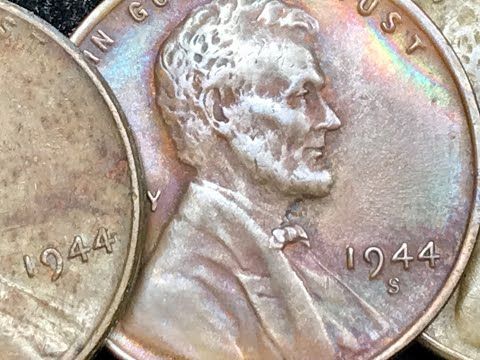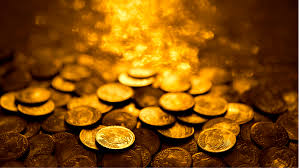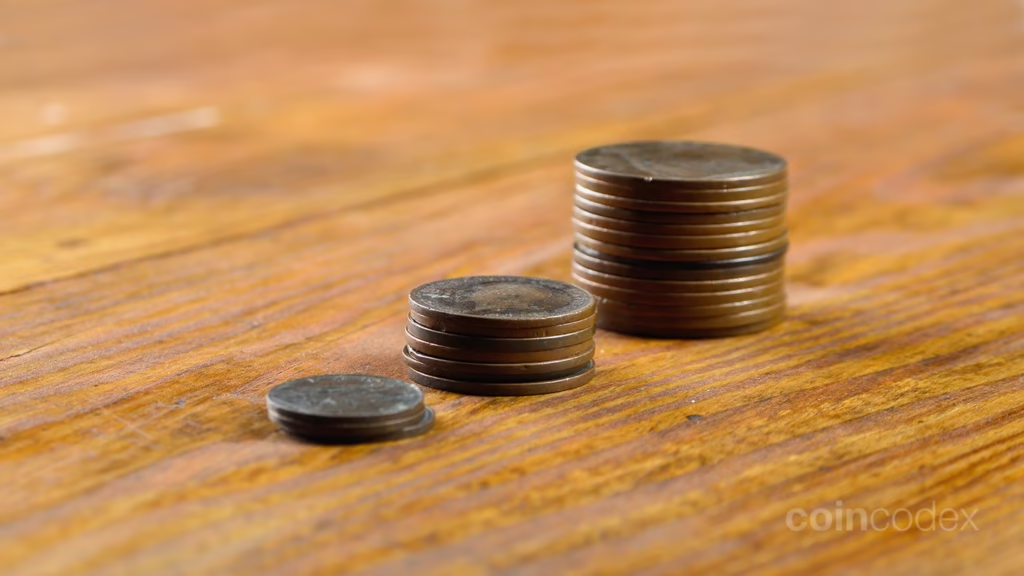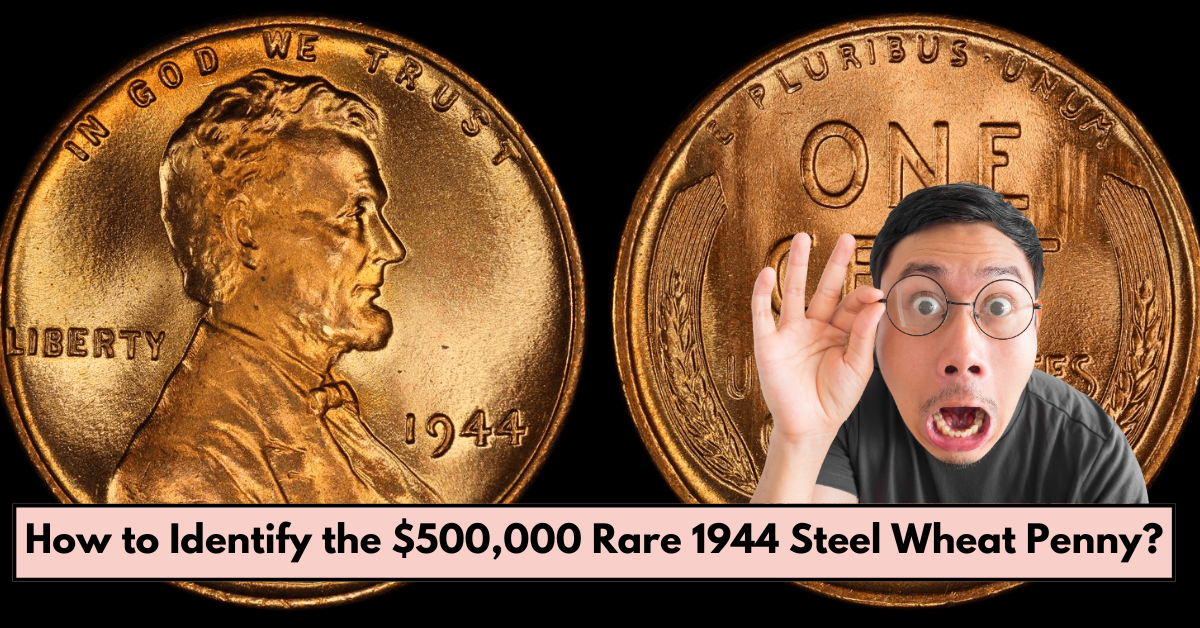The 1944 Steel Wheat Penny is one of the rarest and most coveted coins in American numismatics. If you’re lucky enough to find one, you could be holding a coin worth anywhere from $85,000 to $500,000. But how can you tell if you’ve come across this elusive piece of American history? In this article, we’ll guide you through the essential steps for identifying a 1944 Steel Wheat Penny, its history, and how to avoid falling victim to counterfeit coins.
The History Behind the 1944 Steel Wheat Penny
The 1944 Steel Wheat Penny was the result of an unusual wartime coinage error. In 1943, due to a shortage of copper, the U.S. Mint began striking pennies using steel coated with zinc. However, in 1944, the Mint had returned to using copper, and the 1944 pennies were meant to be struck using this metal.
But a small number of 1944 steel pennies were mistakenly struck, making them extremely rare. Only an estimated 20 to 40 of these steel pennies are believed to exist today. These rare coins are highly sought after by collectors, and they can fetch prices anywhere from $85,000 to $500,000, depending on their condition and provenance.
How to Identify a 1944 Steel Wheat Penny?

It’s easy to mistake a regular 1944 copper penny for the steel version, but there are several key characteristics that set the steel penny apart.
1. Appearance: A Silver-Like Color
The most noticeable difference between a 1944 steel penny and a regular 1944 penny is its color. While the standard 1944 penny is copper-colored, the steel penny has a silver-like appearance. This is because the coin is made from steel coated with a thin layer of zinc, giving it a shiny, metallic look.
If you see a penny with this unusual silver tone, it could be a 1944 steel wheat penny. Chronicle Collectibles explains that the steel penny was struck during a brief period when the Mint made an error by continuing to use steel blanks meant for the previous year’s production.
2. Magnetic Attraction: A Strong Indicator
Another easy way to identify a 1944 steel wheat penny is by its magnetic properties. Unlike copper pennies, steel pennies are magnetic due to their steel composition. Simply take a magnet and hold it near the coin. If the penny is attracted to the magnet, it’s likely a 1944 steel penny.
For more information on identifying the 1944 steel penny, you can check The Fun Times Guide, which provides a comprehensive guide on spotting these valuable coins.
3. Weight: A Key Clue
A regular penny weighs about 3.11 grams, but a 1944 steel penny weighs slightly less—around 2.7 grams. If your penny feels lighter than the standard 3.11 grams, it could be the steel version. This weight difference is due to the use of steel instead of copper.
To verify the weight of your coin, you can use a precision scale. If the weight matches the standard weight of 2.7 grams, it might be worth further inspection. You can read more about coin weights and the importance of accuracy at Coin Community.
4. Mint Mark: Location Matters
The mint mark on a 1944 steel penny can also provide valuable information. If the coin has a “D” mint mark, it indicates that the coin was minted in Denver. Similarly, a “S” mint mark indicates a coin minted in San Francisco. Coins without any mint mark were struck at the Philadelphia Mint.
It’s essential to examine the mint mark closely. If you have a 1944 steel penny without a mint mark, it was minted in Philadelphia. To learn more about mint marks and what they mean, visit the U.S. Mint website.
The Value of a 1944 Steel Wheat Penny

Due to its rarity and historical significance, a 1944 steel wheat penny can fetch an impressive price at auction or through private sales. According to The Fun Times Guide, these coins can range in value from $85,000 to $110,000 depending on their condition. However, some specimens have been known to sell for significantly higher prices, reaching close to $500,000, especially if they are in near-mint condition.
The high value of these pennies makes them a prime target for counterfeiters. As a result, it is essential to have any suspected 1944 steel penny authenticated by a professional.
Protecting Yourself from Counterfeit Coins
Given the high demand and value of the 1944 steel penny, counterfeit versions have become a concern for collectors. Here are some steps to ensure you’re not fooled by fake coins:
1. Get Expert Authentication:
If you suspect that you’ve found a 1944 steel penny, consider having it authenticated by a reputable numismatic expert or professional grading service. The Professional Coin Grading Service (PCGS) is a trusted name in the industry, providing detailed grading and authentication services.
2. Examine Die Markers:
Pay close attention to the fine details of the coin, including die markers and the quality of the strike. Genuine 1944 steel pennies have very specific characteristics that can be identified by experts.
3. Don’t Rely on Visual Inspection Alone:
Since counterfeits can be well-made, it’s important to have a professional inspect the coin if you’re unsure. Always err on the side of caution when dealing with rare and valuable coins.
Conclusion

The 1944 Steel Wheat Penny is a rare and valuable coin that collectors and investors alike are eager to find. By paying attention to the unique characteristics—such as its silver-like appearance, magnetic properties, weight, and mint mark—you can determine whether a penny in your collection is the real deal.
If you do happen to find one, it could be worth hundreds of thousands of dollars, but be cautious of counterfeits. Always seek professional authentication to ensure you are holding a genuine 1944 steel wheat penny.
For more details on the history of U.S. coins, visit the U.S. Mint website.
This article has been carefully fact-checked by our editorial team to ensure accuracy and eliminate any misleading information. We are committed to maintaining the highest standards of integrity in our content.

Premlata is a seasoned finance writer with a keen eye for unraveling complex global financial systems. From government benefits to energy rebates and recruitment trends, she empowers readers with actionable insights and clarity. When she’s not crafting impactful articles, you can find her sharing her expertise on LinkedIn or connecting via email at [email protected].




